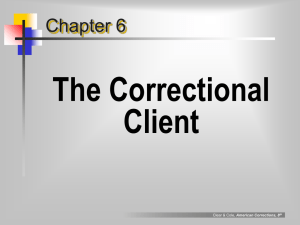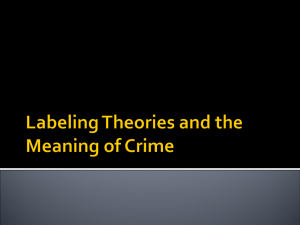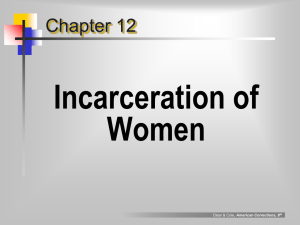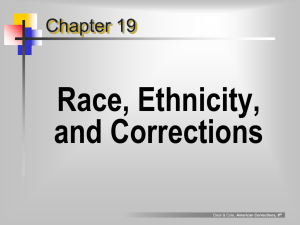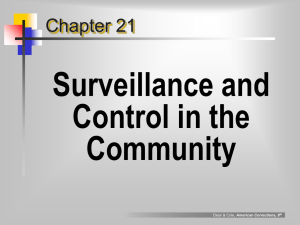Community Justice
advertisement
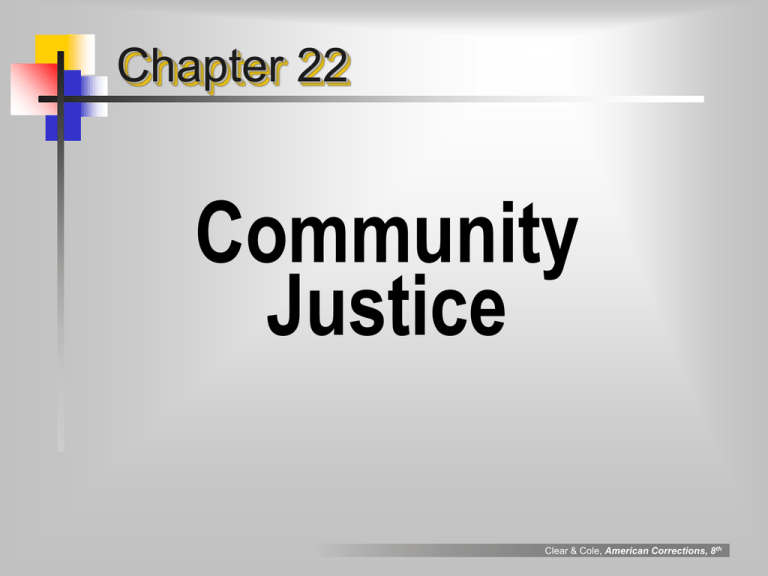
Chapter 22 Community Justice Clear & Cole, American Corrections, 8th Community Justice Definition of Community Justice A Philosophy of Justice A Strategy of Justice Programs How Community Justice Differs from Criminal Justice Neighborhoods Problem Solving Restoration Justice Reinvestment Overview of Differences Clear & Cole, American Corrections, 8th Community Justice Cont. Arguments for Community Justice Crime and Crime Problems Are Local Crime Fighting Improves the Quality of Life Proactive Rather Than Reactive Strategies Are Needed Problems of Community Justice Impingement on Individual Rights Social Inequality Increasing Criminal Justice Costs Clear & Cole, American Corrections, 8th “community justice” a model of justice that emphasizes reparation to the victim and the community, approaching crime from a problem-solving perspective, and citizen involvement in crime prevention Clear & Cole, American Corrections, 8th “collective efficacy” mutual trust among neighbors, combined with willingness to intervene on behalf of the common good, especially to supervise children and maintain public order Clear & Cole, American Corrections, 8th community justice components community justice a philosophy • more ambitious than traditional view of criminal justice; • concerned with quality of life in community a strategy • community policing • environmental crime • restorative justice Clear & Cole, American Corrections, 8th “restorative justice” system of justice that seeks to restore the victim, offender and the community to a level of functioning that existed prior to the criminal event; seeks to repair the damage done (to all parties) by the offender’s criminal act Clear & Cole, American Corrections, 8th restorative justice approach typical programs crime mapping citizen advisory groups re: crime priorities citizen partnerships with justice agencies justice actors are organized locally to enable more effective strategy formation citizens and victims involved in sentencing broad use of offender community service Clear & Cole, American Corrections, 8th “What Do They Want?” The Myth: People in poor communities want “bad guys” to be taken off their streets and sent to prison The Reality: People in poor communities tell researchers that they want to be “safe,” but they also want their family members, even the ones involved in crime, to not have to go to prison Clear & Cole, American Corrections, 8th distinguishing community justice from criminal justice distinguishing features focus is on neighborhood (not legal jur.) focus is on restoration (not retribution) focus is on problem-solving (not adversarial) Clear & Cole, American Corrections, 8th arguments FOR community justice Crime crime affects quality of life of the neighborhood; it is the neighborhood that is best positioned to and has the greatest stake in addressing crime Crime and crime problems are local fighting improves the quality of life effort is to break the grip that crime has on the community Proactive is better than reactive strategies preventing crime is better than reacting to the damage it does to the victim and community Clear & Cole, American Corrections, 8th arguments AGAINST community justice it jeopardizes individual rights tendency toward vigilantism? equality before the law vs. different community approaches to crime control state’s role in criminal justice decreases it exacerbates social inequality it community resources & political influence vary communities with biggest need (worst crime problem) have fewest resources requires funds that are not available traditional criminal justice increasingly costly who pays for new focus? localities can’t afford must shift costs within existing budgets Clear & Cole, American Corrections, 8th

